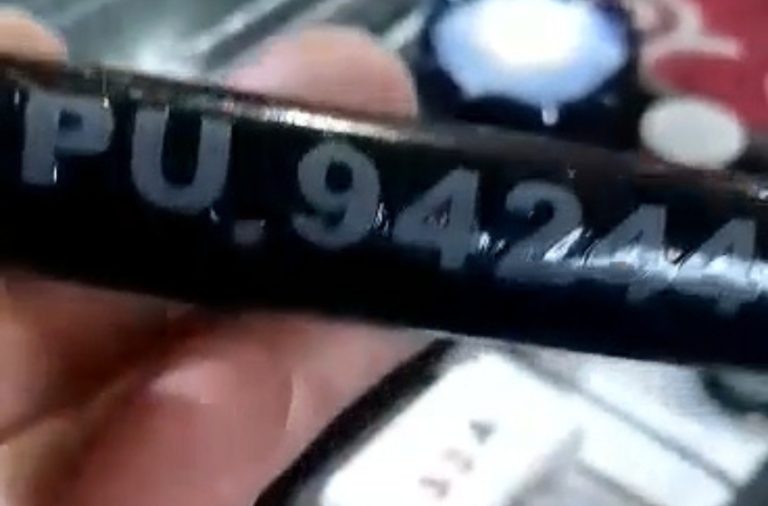Russia Accuses Ukraine of Spreading Radioactive Materials in Syria: A Deep Dive into Disinformation Tactics
Amidst the ongoing conflict and complex geopolitical landscape, a new wave of disinformation has emerged, casting a shadow over Ukraine’s reputation and raising concerns about nuclear safety. The Main Intelligence Directorate of Ukraine’s Ministry of Defense has uncovered a Russian disinformation campaign alleging that Ukraine is proliferating radioactive materials in Syria. This campaign involves the fabricated sale of military equipment purportedly obtained from Ukraine’s Ministry of Defense, including a crudely assembled container labeled with radioactive isotopes and accompanied by a dubious narrative. The incident highlights the escalating information warfare tactics employed by Russia and the potential repercussions on international relations and global security.
This latest disinformation effort centers around a staged “sale” of military equipment supposedly originating from Ukraine. The centerpiece of this fabrication is a container displaying labels indicating the presence of radioactive isotopes, specifically PU.94244U (plutonium) and U.92 (uranium). However, the authenticity of the contents remains unverified. Ukrainian intelligence has exposed the clumsy fabrication, pointing to glaring flaws in the container’s construction and labeling. Illegible Cyrillic text, a haphazardly attached Ukrainian Defense Ministry logo crafted with blue tape, and the inclusion of a mechanical wristwatch within the container all betray the staged nature of the “evidence.” The label “PU 94244U” itself raises significant doubts, as it refers to an extremely rare plutonium isotope found in minuscule quantities within the Earth’s crust, making its presence in such a context highly improbable.
Further fueling the disinformation campaign, Russian actors are reportedly attempting to sell a Soviet-era chemical reconnaissance device, falsely claiming its procurement from Ukrainian defense personnel allegedly operating in Syria. A video promoting this fabricated sale is conspicuously marked with the future date “March 13, 2025 (Thursday),” further exposing the contrived nature of the narrative. This attempt to preemptively establish a false timeline highlights the calculated nature of the disinformation campaign. This isn’t an isolated incident; In 2023, a similar narrative emerged through a blog post claiming the interception of a Ukrainian plutonium container. Concurrently, Russian sources alleged the foiling of a U.S. intelligence operation aimed at framing Russia for the use of chemical weapons in Syria. These recurring patterns underscore Russia’s persistent efforts to manipulate information and sow discord.
The timing and nature of this disinformation campaign suggest a calculated strategy to undermine Ukraine’s image on multiple fronts. By falsely implicating Ukraine in the proliferation of radioactive materials, Russia seeks to tarnish its reputation not only with the new Syrian government but also with Ukraine’s international partners and organizations like the International Atomic Energy Agency (IAEA). This ploy attempts to exploit global sensitivities surrounding nuclear safety, creating a narrative that portrays Ukraine as a destabilizing force in the region. The blatant fabrication of the evidence and the easily debunked timeline further demonstrate a disregard for truth and a willingness to manipulate information for political gain.
The repeated use of similar props and narratives, as evidenced by the 2023 incident, reveals a pattern of recycled disinformation tactics. Moscow appears to be drawing from a well-worn playbook, adapting old schemes to fit new contexts. This suggests a deliberate and systematic approach to disinformation, utilizing pre-fabricated narratives and readily available “evidence” to quickly disseminate false information. The ease with which these narratives are constructed and disseminated highlights the need for heightened vigilance and critical analysis of information, particularly in the context of ongoing geopolitical tensions.
The implications of this disinformation campaign extend beyond mere reputational damage. By raising false alarms about nuclear safety, Russia seeks to divert attention from its own actions in the region and create a climate of uncertainty and distrust. Such tactics can have far-reaching consequences, potentially impacting international cooperation, humanitarian efforts, and diplomatic relations. The international community must recognize and actively counter these disinformation efforts to safeguard the integrity of information and maintain stability in an already complex global landscape. Andriy Yusov, a representative of Ukraine’s military intelligence, characterized this as a calculated attempt by the Kremlin to damage Ukraine’s standing on the global stage, emphasizing the need for a firm response from the international community. This incident underscores the critical importance of media literacy and fact-checking in the face of escalating information warfare. It also highlights the need for international cooperation to counter the spread of disinformation and uphold the principles of truth and transparency. As the world grapples with complex geopolitical challenges, the ability to discern fact from fiction becomes paramount in ensuring informed decision-making and preserving international security.


